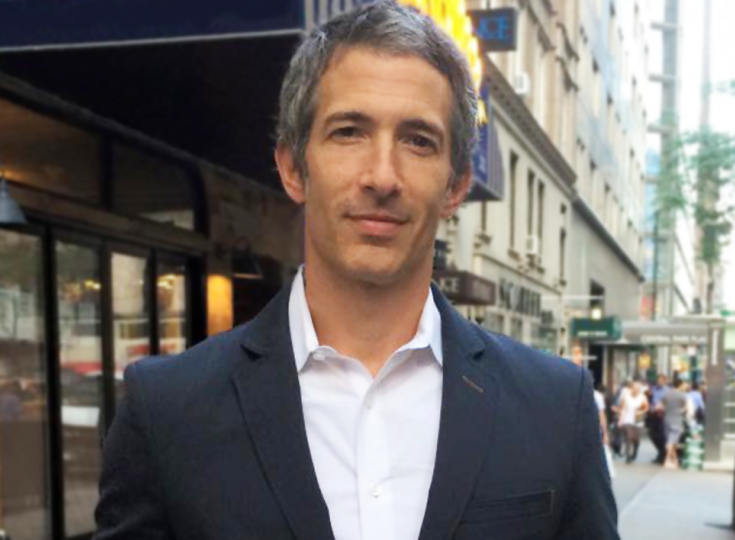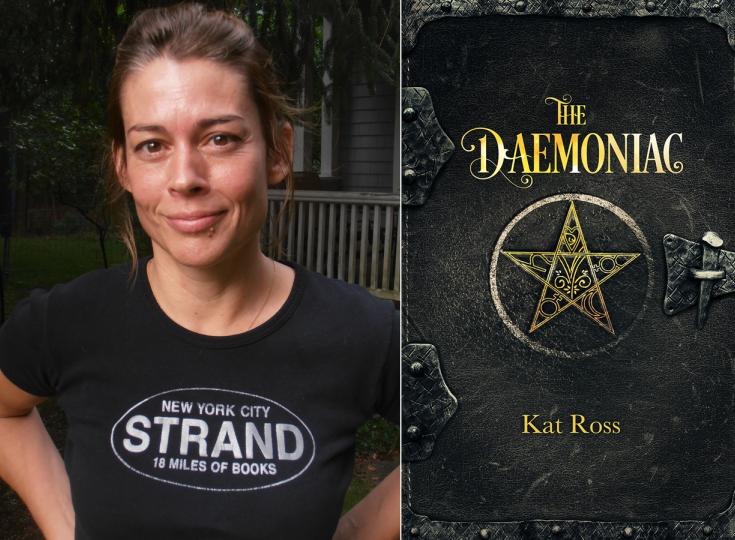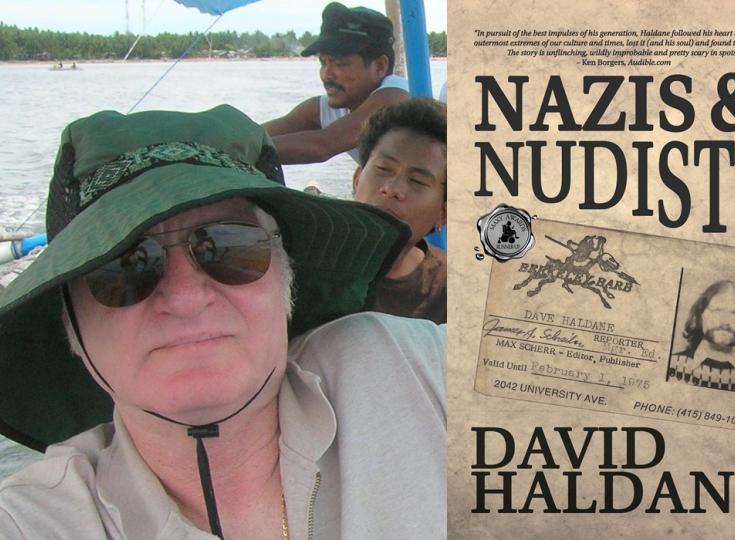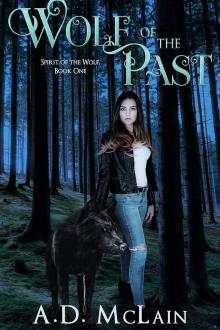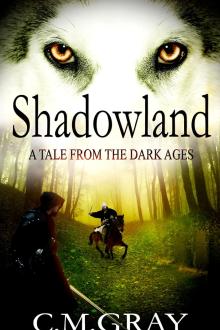Gerald Knight - Historical Literature Series Set in Pre-Contact Pacific
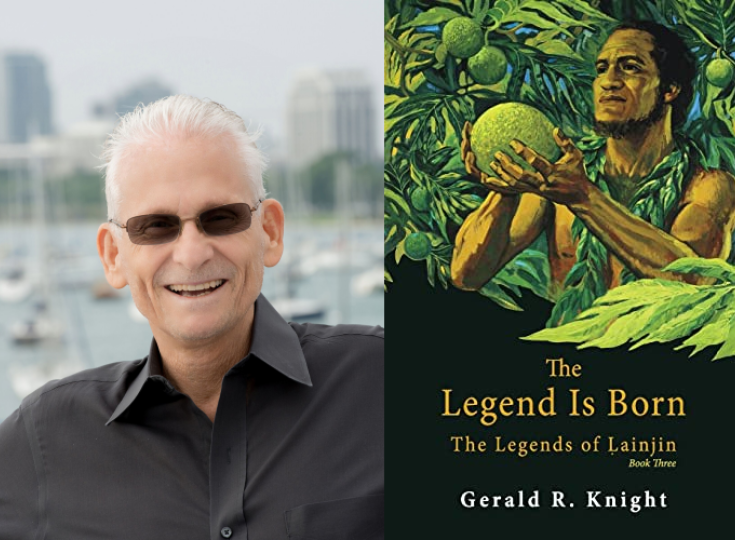
Gerald was only 19 when he entered the Peace Corps in 1967 after two years as a literature student at Albion College. After graduation, he returned to the Marshall Islands with a love for literature and an interest in transcribing the stories he had heard in previous years. He taught for a year and worked as a commercial fisherman for two, honing his knowledge of the language and culture. Then he went for an uninterrupted four-year stay on remote Rongelap Atoll to study with the renowned traditional navigators and storytellers there. In 1979 he attended a one-year apprentice program at the Bishop Museum in Honolulu to prepare as Director of the Alele Museum and National Archive. He held that position for ten years culminating in a two-year collaboration with the Field Museum of Natural History on their permanent “Traveling the Pacific” exhibit that features a donated traditional outrigger canoe. In 1999 Gerald graduated from the University of Illinois with master’s degrees in business administration and accounting. He currently heads a thriving CPA tax practice in Palos Hill, IL. He has completed the Chicago – Mackinac Island race five times and has been a member of the Columbia Yacht Club since 2005. As our Author of the Day, he tells us about his book, The Legend is Born.
Please give us a short introduction to what The Legend is Born is about.
The story begins with Helkena, a young, still untattooed girl, enduring a typhoon crashing over the only island she has ever known. Her home is Wōtto, one of the dry, windswept atolls of the northern Marshall Islands. The newborn infant Ḷainjin has just been entrusted to her care by his mother, Taramalu, who has sailed her fleet of proas into the open ocean to save them from certain destruction.
Helkena, having barely survived the storm, must now travel to Naṃdik, a wet atoll in the southern rain belt of the Rālik Chain. As Ḷainjin’s surrogate mother, she will sail with the infant by outrigger canoe in the company of his maternal grandfathers. These kind men had recently helped the Wōtto Islanders overcome the terrible drought that typically follows a typhoon. With the trade-wind season approaching, it’s soon time to complete their voyage. The grandfathers begin teaching Helkena the traditional navigational arts along the way.
Her goal is to get her tattoos on Naṃdik and, in time, to find a man there to take home to Wōtto. But will she entice a man from the lush south to her barren desert island?
Far from being a simple story, this colorful, romantic tale presents a surprising background to the pre-contact lovemaking culture of the Marshall Islands. It also reveals the early years of young Ḷainjin, the hero of the Legends of Ḷainjin series of historical literary fiction.
What inspired you to write a story set in pre-contact Pacific?
Most historical fiction based on earlier periods involves English, Irish, or European history. A few novels are based on ancient Roman or Greek history. One series, by Jean Auel, covers prehistoric times. There are several historical fiction novels about the war in the Pacific, and of course, there is The Great Hawaii by James A. Michener. But people were wandering the Pacific for hundreds of years before the period of his novel begins, and their oral histories document rich cultures with surprisingly nonprimitive, humanistic lifestyles.
I came across this oral history while on tour with the Peace Corps in 1967, and the rest is history as they say. I never decided to start a new literary genre. This was simply the only genre I had ever known.
Tell us more about Helkena. What makes her so special?
The historical character in my series is Ḷainjin. Helkena's mother, who served as Taramalu’s midwife, is asked to care for him when she leads her fleet of proas out to sea to escape the destruction of an oncoming typhoon. Helkena simply accepts her role as caregiver to Ḷainjin, as assigned by her mother.
Much of child-rearing in the Marshall Islands is delegated to elder siblings. I guess it’s Helkena’s diligence in accepting this role that makes her so special. Later she becomes a navigator's apprentice and accompanies the child on his earliest training voyages. She also demonstrates the courage necessary to undergo the body tattoo process necessary to become a respected woman. Finally, she persists in achieving her personal goal of attracting a good man to escort her back to Wōtto. I think it is her adventurous nature that we come to love and respect, and she passes this gift to the young and impressionable child who is temporarily in her care.
How much research did this book require from you to make the historical part of the story ring true, and did you find any interesting facts?
I lived among the Marshall Islanders for ten years as a teacher, fisherman, and beachcomber. During this period, I wrote my first book, Man This Reef (currently out of print). It is a translated autobiography of the traditional storyteller Lōbidbiden. The Marshall Islands government then asked me to train for and accept the position of curator of the Alele Museum. During this training, they allowed me to see the artifacts of material culture collected by the German anthropologists who visited the islands early in the seventeenth century. One of our programs at the museum was videotaping traditional orators to document their stories. So, my knowledge of the life and culture of the Marshall Islands took about twenty years to develop.
Then, much later in life—after moving back to Chicago, getting degrees in business and accounting, and settling into a comfortable tax accounting practice—I began researching much of what historians and archaeologists have written about early Pacific history and what they infer about the pre-contact period. I list some of this research in a bibliography in The Forbidden Man, which is book two in the series. Much of this literature comprises the topics of essays I have published on my blog at GeraldRKnight.com.
Besides writing, what other secret skills do you have?
As a certified public accountant (CPA), I spent several years administering retirement plans for major corporations. Later, I established a tax accounting firm that offers retirement planning advice to interested clients.
You entered the Peace Corps when you were only nineteen. How has it influenced your worldview and your writing?
I applied to the Peace Corps during my second year at Albion College, where I studied writing and literature. The Peace Corps was my lucky chance to endure the sort of life experiences a writer needs to age the soul. There is no short answer to this question. Suffice it to say that the influence was profound. Anyone who subscribes to my blog gets a series of short essays about this early period and how it influenced my life.
This is Book 3 in a series. Can it be read as a standalone? How do the other books in the series tie in with this one?
The books in the series are all tied to the historic character Ḷainjin, but I wrote them such that each story can stand alone. Although they can be read in any order, there is an underlying method to their sequence. I wrote The Legend Is Born with the idea that it would be a free e-book introduction to the series because sales of the first two books were slow.
Do any of your characters ever take off on their own tangent, refusing to do what you had planned for them?
Ḷainjin travels among cultures known for their promiscuity. He is searching for his mother but often trips into lovers who lead him down disparate paths.
Interesting cover. Please tell us more about it.
I leased the cover design from Herbert K. Kāne, LLC. Each cover in the series comes from a painting by Kawainui (his middle Hawaiian name.) Kāne is a famous Hawaiian artist who specializes in portraying Hawaiian culture and history.
I think of this image as that of Lōjurok, Helkena’s lover. He holds a ripe breadfruit. Notice that it is more yellow than the others in the breadfruit tree. Notice the breadfruit leaf. These are examples of the physical detail of Kāne’s work. He is offering the breadfruit as the life-giving gift it is. Breadfruit is a centerpiece of leisurely Pacific life. It literally falls into the islanders’ hands and—once baked, boiled with coconut milk, or roasted—provides unmatched nutritious sustenance.
You also included some poetry in the book. Why did you take this approach?
In my mind, there was no other approach to take. We call these lines poetry. Marshall Islanders call them ikir or roro. These chants are integral to the stories in which they emerge. Each has its own cadence, rhyme scheme, and alliteration. I did not create this poetry; I creatively translated these chants to English.
When starting on a new book, what is the first thing you do?
I write the first sentence, finish the first paragraph, and then the first page. I’m not being facetious. The first sentence is supposed to be special, and a lot of authors concentrate on making it unique. It is also very popular to concentrate on creating a hook that draws the reader into the story. To me, it is the character, as well as the rhythm and mood of the prose, that draws my reader into the story. If the prose is good, the hook will develop naturally as the story continues. The beginning of the story establishes the all-important authorial voice that will continue throughout the book or series.
I had wanted to be a writer since boyhood but was in my sixties before I found my voice. Don’t ask me how or why. One day it just appeared.
Do you have any interesting writing habits? What is an average writing day like for you?
Generally, I write first thing in the morning. Most days before dawn. Sometimes I can’t sleep, and then I write at night. Only rarely do I write late in the morning or during the afternoon. I use those hours, especially on weekends, to do research.
What are you working on right now?
Right now, I am writing the sequel to The Legend Is Born. It tells the rest of the story of Helkena and Lōjurok, their voyage to Wōtto and their life on that dry atoll—as well as Lōjurok’s ongoing connection to Naṃdik and the characters there.
Where can our readers discover more of your work or interact with you?
All my books appear on Amazon, Barnes & Noble, and so on. The Legend Is Born e-book will always be a free introduction to the series. My website GeraldRKnight.com contains my blog and more information about me, my books, and Pacific history and culture.
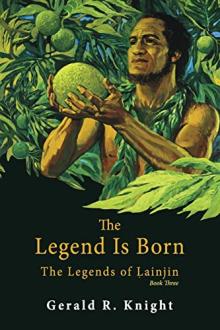
A free pre-prequel to the historical series Legends of Ḷainjin. Helkena, having survived a typhoon caring for the young child Lainjin must now travel to Namdik. Her goal is to find a man to take home to Wotto. But can she entice a man to her barren desert island?
